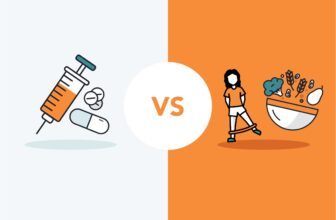4 Things about Healthy Heart Diet – You just need to keep in mind.

A healthy diet is most important for a healthy heart. Heart disease is among the leading killers of both men and women around the world. Certain lifestyle factors such as keeping a healthy weight loss and regular exercise are essential for keeping a wholesome heart, so we choose to consume things as much.
A nutritious diet is one of your best weapons in fighting heart disease and sense you’re healthiest. In reality, choosing to adhere to a wholesome heart diet can reduce your risk of cardiovascular disease and stroke by 80 percent.
If you don’t know where to begin, choosing to make simple modifications to your eating habits and nutrition is a great place to get started. To help keep it all straight and understand the reasoning’s behind the various nutrition recommendations, take a few of these tips.
Also read | 8 Types of People Highly Risky Under Covid-19 Pandemic.
Pay Attention to the Fat
Fat is essential to your diet; in other words, you want it! But, there are forms of fat that could negatively impact your overall health; specifically, saturated and polyunsaturated fat are the two types of fats that present the most concern.
These fats can influence blood glucose levels by reducing HDL cholesterol (good cholesterol) while elevating the amount of LDL cholesterol (bad cholesterol) in your blood glucose.
When the HDL and LDL cholesterol levels are not within a normal selection or are disproportionate, this may cause extra cholesterol to accumulate in the walls of the blood vessels, which increases the risk for heart disease and stroke.
Foods containing saturated fats include fatty beef, bacon, sausage, lamb, pork butter, cheese, and other dairy products made from whole or two-percent milk.
Trans-fat is both naturally occurring and artificially made. Many fried foods and packaged products contain high levels of trans-fat as well.
The American Heart Association (AHA) recommends that adults limit their intake of saturated fat to five to six percent of their total calories. The usage of trans fat ought to be less than one percent of overall calorie consumption.
Also read | Vaginal Yeast Infections: You Must Need to Know Everything About it.
Limit Sodium Intake
Similar to sodium, fat is a mineral that’s critical for life. Sodium is required for many bodily functions such as fluid quantity, acid-base balance, and signals transmission for muscle function.
However, too much sodium may pose risks. When sodium is raised in the blood vessels, this can increase water retention in the blood vessels resulting in elevated blood pressure.
Over time, if elevated blood pressure is not resolved, this can put significant strain on the heart, contribute to plaque build-up, and finally increase your chance of a heart attack or stroke.
Sodium is a tricky ingredient and takes a bit more effort and focus on detail when attempting to cut back. A wonderful place to start when attempting to cut down sodium is checking out the Nutrition Facts labels on products. Sodium could be added to foods at great amounts without you even being aware.
One area salt likes to hide out is in dishes and meals you purchase from a restaurant. In actuality, over 75% of salt intake comes directly from restaurant and processed meals (wow!).
Although these suggestions may appear rough, your salt intake will be significantly reduced, and also your heart will be happy. Implementing these tips will not only assist with fulfilling this recommendation but also decrease your risk for hypertension, stroke, stroke, heart failure, osteoporosis, stomach cancer, kidney disease, and more.
Also read | 7 Essential Food Nutrition To Prevent Hair Loss.
Don’t Skip the Veggies (or Fruit)
As many of us know, the ingestion of fruits and vegetables is a significant part of a nutritious diet. Reduced ingestion of produce is connected to bad health and increased risk of important diseases.
It had been estimated that 3.9 million deaths globally had been attributed to insufficient intake of fruits and vegetables (2017). Consequently, including fruits and vegetables as part of your daily diet is something that must not be ignored.
Incorporating fruits and vegetables is quite straightforward! whether they are canned, frozen, or fresh-each, one is going to be adequately healthy. If such as fruits and vegetables into your daily diet has been difficult, start slow.
Attempt gradually increasing your fruit or vegetable portions during the day. Gradually introducing a growing number of fruits and veggies to a plate will make this tip seem overwhelming.
Eating fruits and vegetables are good! The AHA recommends filling half of your plate with fruits and veggies to fulfill the 4 1/2 cups of vegetables and fruit per day.
Though this recommendation might look impossible-remember: all produce points, which means canned, fresh, or frozen types, can help accomplish your goals, enhance your diet and your health.
Also read | The Complete Overview and Guide to the DASH Diet.
Add more Whole Grains & Dietary fiber to your diet
Let us first understand whole grain, elegant grain, and Fiber. Whole grains contain the whole kernel, which comprises three components, the bran, germ, and endosperm, offering all kinds of important nutrients such as B vitamins, vitamins C, potassium, rich-protein, folic acid, fiber, magnesium, and iron. On the other hand, refined grains are milled and processed.
Higher fiber consumption is associated with reduced rates of “bad” cholesterol (remember: LDL cholesterol) and reduced cardiovascular disease risk. Another bonus is that high fiber foods can help you feel full for longer and are fewer in carbs.
Therefore, boosting your entire grain consumption means you are also increasing fiber consumption. Why don’t you kill two birds with one stone and change to whole grains!
Adding whole grains can help improve blood cholesterol and reduce heart disease, stroke and type 2 diabetes. The AHA recommends that half of the grains you eat are whole grains and consume 28 g of dietary fiber each day.
Also read | Avoid these Foods Before Bed – That May Cause Insomnia.
Choose High Protein Diet Wisely
For a lot of us, meat is the primary source of protein. However, the popular meat sources-such as hamburgers, steaks, and bacon, although high in carbs are significant sources of saturated fat (reminder: the “bad” fat).
Higher consumption of these kinds of proteins may increase the risk for many health complications like obesity, higher cholesterol and plaque build-up, and course-heart stroke and disease. Making a change to center healthy protein resources might significantly lower these risks and help keep a heart-healthy diet.
Difficult, but it doesn’t have to be impossible. One easy tip for handling meat and protein intake is to take care of meat for a part of the meal, instead of the primary event. Consider restricting meat to 6 ounces per day, two servings (sign: a single serving of meat= dimension of a deck of cards).
So Far as heart-healthy protein sources, the AHA urges including fish, shellfish, skinless poultry, and trimmed lean meats like many pork cuts. Starting to incorporate these alternate protein sources into your diet can help you get to the right path with your heart health.
Also read | Food for Improve Sleep Quality – Enhance your Sleep time and Quality Naturally.
Bottom Line
Remember, it’s all about taking the simple steps ahead to protecting your heart and overall wellbeing. A heart-healthy diet will be your Best protection start today by using these heart-healthy strategies and always evaluating your nutrition. Don’t let heart disorder rule your world; create the adjustments that best fit your lifestyle and health goals.





